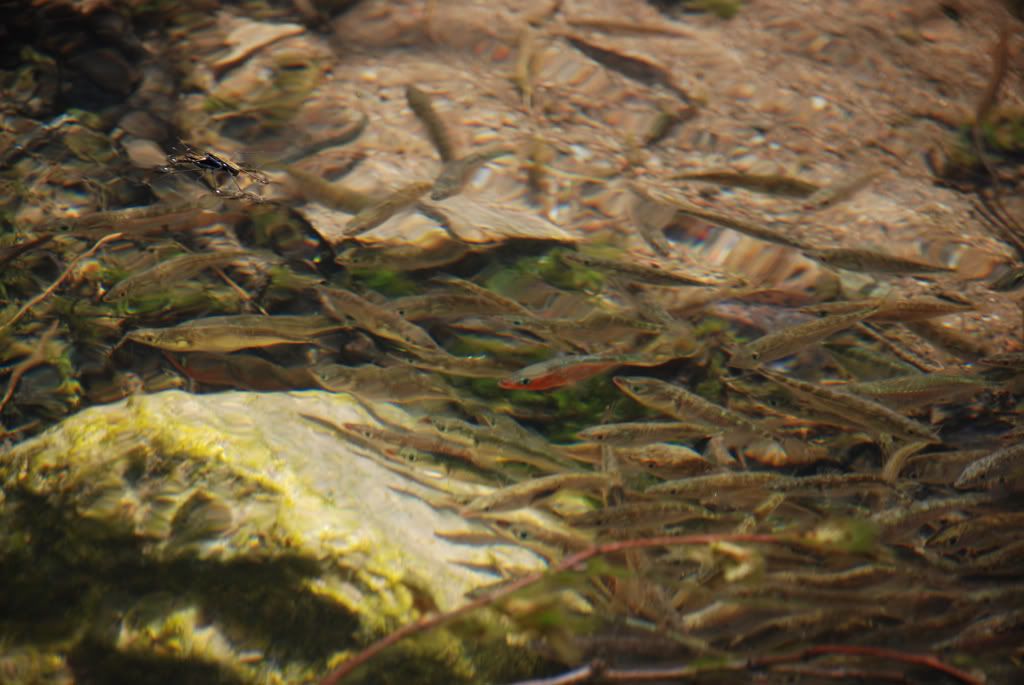Don't ya put it in your mouth...

Nikon D80, 18-135mm @135mm, f5.6, 1/125, ISO200, polarizing filter
Small shoal of three-spined stickleback (Gasterosteus aculeatus) in a small stream in Middle River on the walk towards the abandoned mill that I used in photo #117 of my 365 project (below). Given that this stream was pretty much unpassable about 1m upstream of this shot, and the fish were about 15m from the salt water, I think it's safe to say that these are anadramous sticklebacks, moving to the fresh water to breed, and growing/feeding in the salt water. The males were in their breeding colours, with bright red bellies and blue eyes. I hadn't seen this sort of grouping in sticklebacks before, but I'm more familiar with freshwater forms that don't migrate, and are more territorial.
Three-spined sticklebacks are common and native across North America, Europe and Asia. They've a wide range of habitat tolerances, and largely eat planktonic stuff, and stuff from the substrate... and are certainly not above nibbling a worm on a fish hook either. Sticklebacks are characterized, as the name might suggest, by stout spines on their backs (and bellies). Despite many species having common names describing the number of spines they possess, this can be misleading as it's not a defining character, an spine numbers can vary. Three-spines do tend to have three spines, however, though there is much variation in other morphological characters, such as mouth shape, body shape, size, number of armoured plates on the sides and the like. Anadromous fish tend to be more heavily armoured than freshwater fish, freshwater fish in steep sided lakes tend to be short and thin, with big eyes and upturned mouths, while freshwater fish in shallow lakes tend to be thicker, have smaller eyes and forward pointing mouths (this covers most of them that I've seen)... etc.
Anyway, babbling about a kinda neat fish... I'll stop... but only if you'll go out and look for them in your area!